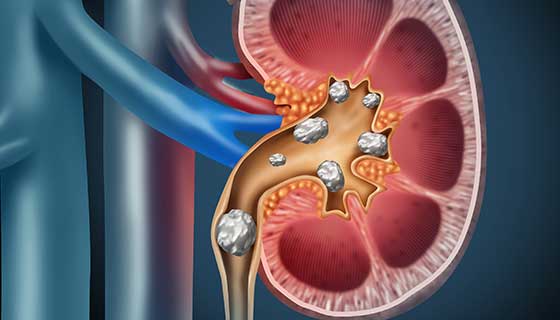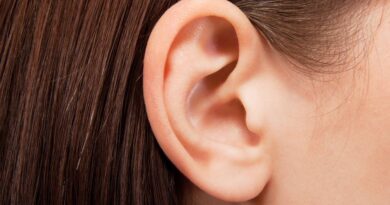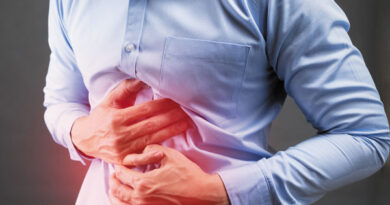Kidney Stones – Symptoms, Causes and Treatment
The formation of stones in the kidneys or urinary tract is a fairly common disorder. The stones are formed from the chemicals usually found in the urine such as uric acid, phosphorus, calcium and oxalic acid. They may vary in consistency from sand and gravel-like obstructions to the size of the bird’s eggs.
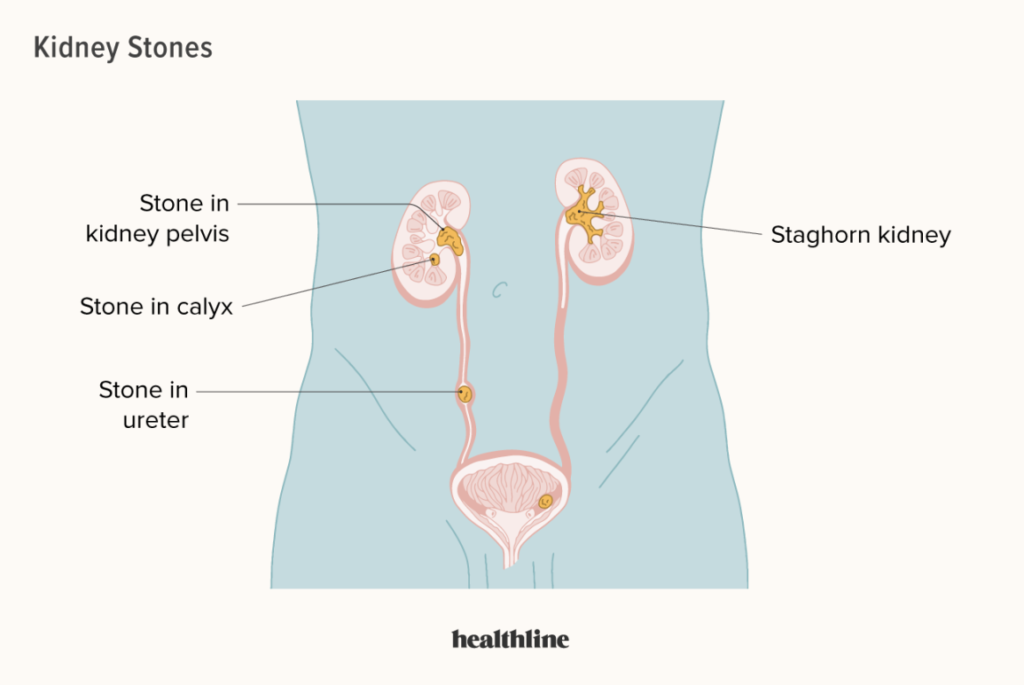
Stones may form and grow because the concentration of a particular substance in the urine exceeds its solubility. This disorder occurs more frequently in middle age, with men being afflicted more often than women.
The kidneys are two bean shaped organs, lying below the waist on either side of the spinal column on the back wall of the abdomen. They are soft, reddish brown in colour and on an average measures 10 cm in length, 6 cm in width and 2.5 cm in thickness at centre. They are the filtering plant for purifying the blood, removing water and salts from it which are passed into the bladder as urine.
Symptoms
Kidney stones usually cause severe pain in their attempt to pass down the ureter on their way to the bladder. The pain is first felt in the side and thereafter in the groin and thighs. Other symptoms of kidney stones are a desire to urinate frequently, painful urination, scanty urination, nausea, vomiting, sweating, chills and shock. The patient may also pass blood with the urine. Sometimes, large stones may remain in the kidneys without causing any trouble and these are known as ‘silent’ stones.
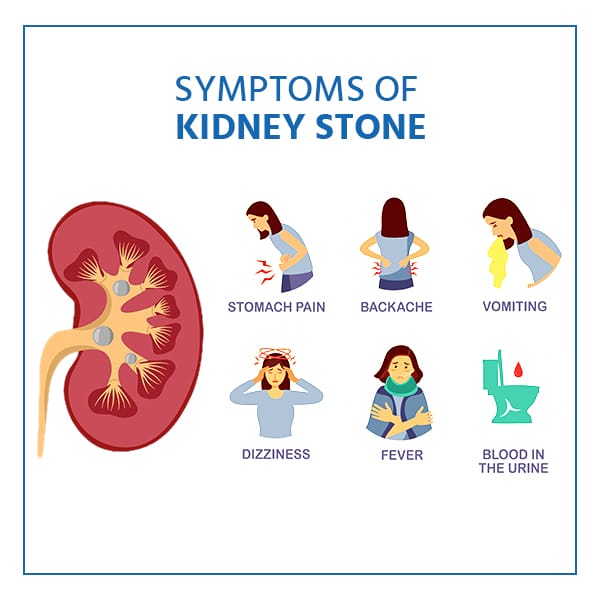
Causes
The formation of stones in the kidneys is the result of defects in the general metabolism. They usually occur when the urine becomes highly concentrated due to heavy perspiration or insufficient intake of fluids. They are aggravated by sedentary lifestyle. The other causes are wrong diet, excess intake of acid-forming foods, white flour and sugar products, meat, tea, coffee, condiments and spices, rich foods and overeating. Lack of vitamin A and an excessive intake of vitamin D may also lead to formation of stones.

Types of Stones
Chemically, urinary stones are of two categories, namely, primary stones and secondary stones. Primary stones are ordinarily not due to infection and are formed in acidic urine. They usually result from alcoholism, sedentary life, constipation and excessive intake of nitrogeneous or purine-rich foods. Secondary stones are due to local infection and are formed in alkaline urine.
Most kidney stones are composed either of calcium oxalate or phosphate, the latter being most common in the presence of infection. About 90 percent of all stones contain calcium as the chief constituent. More than half of these are mixtures of calcium, ammonium and magnesium, phosphates and carbonates, while the remainder contain oxalate. Uric acid and cystine stones represent about four percent and one pecent respectively of the total incidence of stones.
Treatment
A majority patients suffering from kidney stones can be treated successfully by proper dietary regulations. These regulations will also prevent a recurrence of the symptoms. Only a few cases require surgery.
The patient should avoid the foods which irritate the kidneys, to control acidity or alkalinity of the urine and to ensure adequate intake of fluids to prevent the urine from becoming concentrated. The foods considered irritants to the kidneys are alcoholic beverages, condiments, pickles, certain vegetables like cucumbers, radishes, tomatoes, spinach, rhubarb, water cress and those with strong aroma such as asparagus, onions, beans, cabbage and cauliflower, meat, gravies and carbonated waters.
In calcium phosphate stones, over-secretion of parathyroid hormone causes loss of calcium from the bones resulting in a high blood level of calcium with increased excretion of calcium in the urine. An abnormally high intake of milk, alkalis or vitamin D may also result in the formation of calcium phosphate stones.
For controlling the formation of calcium phosphate stones, a moderately low calcium and phosphorus diet should be taken. The intake of calcium and phosphates should be restricted to minimal levels consistent with maintaining nutritional adequacy. The maintenance level of calcium is 680 mg and of Phosphorus is 1000 mg. In this diet, milk should constitute the main source of calcium and curd or cottage cheese, lentils and groundnuts should form the main sources of phosphorus. Foods which should be avoided are whole wheat flour, Bengal gram, peas, soyabeans, beets, spinach, cauliflower, turnips, carrots, almonds and coconuts.
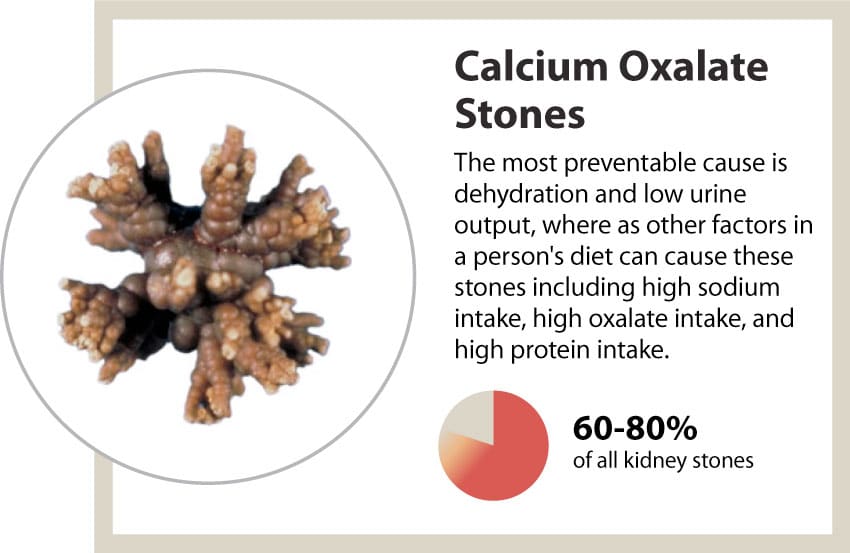
When stones are composed of calcium and magnesium phosphates and carbonates, the diet should be so regulated as to maintain an acidic urine. In such a diet, only half a litre of milk, two servings of fruits and two servings of vegetables (200 grams) should be taken. The vegetables may consist of asparagus, fresh green peas, squash, pumpkins, turnips, cauliflower, cabbage and tomatoes. For fruits, watermelon, grapes, peaches, pears, pineapple, papayas and guavas may be taken.
On the other hand, the urine should be kept alkaline if oxalate and uric acid stones are being formed. In this diet, fruits and vegetables should be liberally used and acid-forming foods should be kept to the minimum necessary for satisfactory nutrition. When the stones contain oxalate, foods with high oxalic acid content should be avoided. These foods include almonds, beetroots, brinjal, brown bread, cabbage, cherry, chocolate, french beans, potatoes, radish, spinach and soyabeans.
Uric stones occur in patients who have an increased uric acid in the blood and increased uric acid excretion in the urine. Since uric acid is an end product of purine metabolism, foods with a high purine content such as sweet bread, liver and kidney should be avoided.
Kidney beans, also known as French beans or common beans, are regarded as a very effective remedy for kidney problems, including kidney stones. The basil, known as tulsi in the vernacular, has a strengthening effect on the kidneys. In case of kidney stones, basil juice and honey should be taken for six months. It has been found that stones can be expelled from the urinary tract with this treatment. The celery is also a valuable food for those who are prone to stone formation in the kidneys or the gall bladder. Its regular use prevents future stone formation.
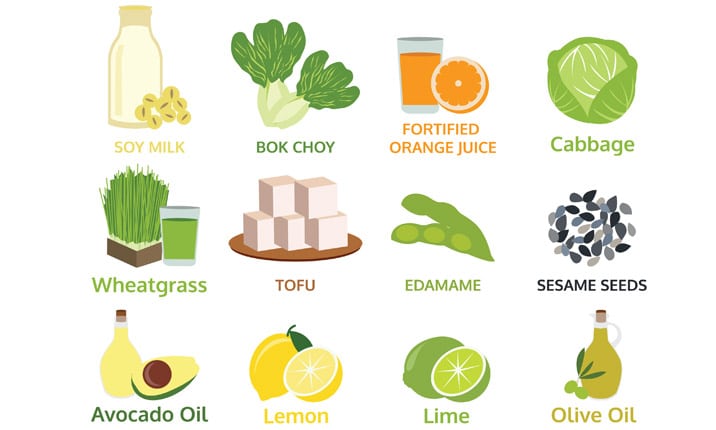
Research has shown the remarkable therapeutic success of vitamin B6 or pyridoxine in the treatment of kidney stones. This treatment has to be continued for several months for obtaining a permanent cure.
The patient should take a low-protein diet, restricting protein to one gram per Kg of food. A liberal intake of fluid upto 3,000 ml or more daily is essential to prevent the production of urine at the concentration level where the salts precipitate out.
Certain yogasanas such as pavanmuktasana, uttanpadasana, bhujangasana, dhannurasana and halasana are also highly beneficial as they stimulate the kidneys.

